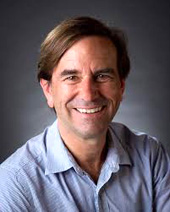
Please could you start by providing a brief overview of your own experience and research. What would you say is your most important research finding so far?

My research investigates signal transduction pathways that function in developmental and pathological angiogenesis, including Notch, Anthrax Toxin Receptors and Clics.
We have widespread interest in how angiogenic mechanisms drive embryonic, ovarian, placental, retinal and dermal angiogenesis. In addition, we focus on the importance of angiogenesis in fertility, preeclampsia, and retinopathies. Finally, we study how Notch ligands function in the tumor microenvironment.
In the 1990’s, our laboratory identified Notch4 as an endothelial Notch gene and helped establish roles for Notch in arterial development and pathological angiogenesis. This discovery helped launch the investigation of Notch in angiogenesis, which is now a robust enterprise spanning academic research and pharmaceutical therapeutic development. In fact, we recently developed as set of Notch inhibitors, called ‘Notch decoys’ that block tumor growth by reducing tumor vessel growth and function.
Please can you provide some background to the Herbert Irving Comprehensive Cancer Center?
I currently serve as the co-Director of the Cancer Regulatory Networks program at the Herbert Irving Comprehensive Cancer Center (HICCC) at Columbia University, along with Andrea Califano, the Chair of the Systems Biology department.
The HICCC houses an NCI-sponsored comprehensive cancer center, which means HICCC partners with the New York-Hospital system for clinical care and research, and receives funding from the National Cancer Institute.
The HICCC has an exciting and broad-based research program that, in addition to cancer regulatory networks, focuses on cancer genetics, public health, breast, prostrate, lymphoma/leukemia, and neuro-oncology.
The Cancer regulatory networks program brings together diverse research from systems biology to studies of tumor microenvironment, so it’s an exciting area for networking among Columbia University cancer researchers.
A number of your research projects have evolved from casual conversations with other colleagues in the center, do you have any highlights?
We have used interactions with system biologists to help understand the phenotype of ovarian cancer cells growing in the peritoneal cavity. The ideas we are pursuing evolved from conversations in hallways, labs, and conference rooms on the 9th floor of the Irving Cancer Research center with Dr. Andrea Califano.
My lab has also helped Dr. Timothy Wang understand the cancer stem cell niche in gastrointestinal cancer; Dr. Wang’s office is next to my own and he simply popped in to my office one day to discuss a recent finding, and our joint pursuit of a series of experiments quickly followed.
How has the scientific community at Columbia University and elsewhere impacted your research?
The study of the microvasculature and angiogenesis impacts virtually every tissue and a large spectrum of disease faced by humans.
The study of the microvasculature and angiogenesis impacts virtually every tissue and a large spectrum of disease faced by humans. Thus, I have deemed it essential to be versed on how microvascular tissue functions in these diverse settings.
Being at Columbia University has afforded me the opportunity to become aware and educated about these diverse tissues and pathologies. It has been particularly exciting to tap in to physician scientists on campus to better understand pathological angiogenesis. This is a central method by which my own lab has studied angiogenesis in reproduction and placenta.
In your opinion, what are the advantages and costs of scientific collaborations?
In my opinion, the advantages are many and the costs are few. My approach is to push toward collaborations. In many cases, this may start as casual conversations and be shelved for future consideration, and in many cases these have led to new perspectives on my own research that lead to new studies.
Having run a research lab for the past two decades, I have learned how best to manage collaborations, through open and frank discussions, and try to impart this strategy to the scientists in training.
Do you have any advice to help early career researchers identify collaborators?
My advice is to work hard, find unique opportunities while staying focused and enjoy the process of collaborative science.
Speaking of which, I do enjoy the role that I have played in development of early career researchers. I had wonderful and insightful advice from my colleagues upon arriving at Columbia University as a junior faculty, and try to give back to the new investigators. My advice is to work hard, find unique opportunities while staying focused and enjoy the process of collaborative science.
Finally, what areas of cancer research do you think are underrepresented or deserve more attention?
Two areas deserve mention. One is tumor metastasis, which is a truly difficult phase of tumor development for patients, and involves complex dynamics between tumor and host. The second is what I may call systems tumor microenvironment research; which can be broadly defined as using system biology approaches to understand how cancer cells interact with normal human cells.
This latter area is receiving much more attention as both systems biologists and tumor biologists, as well as clinicians, try to understand the power and success of blockade of immune checkpoint pathways.
- Quiz: Find out how much you know about cancer research - 9th October 2015
- Cancer research in the East and West: an Editor Q+A - 8th October 2015
- The team science approach to fight cancer - 8th October 2015
Comments